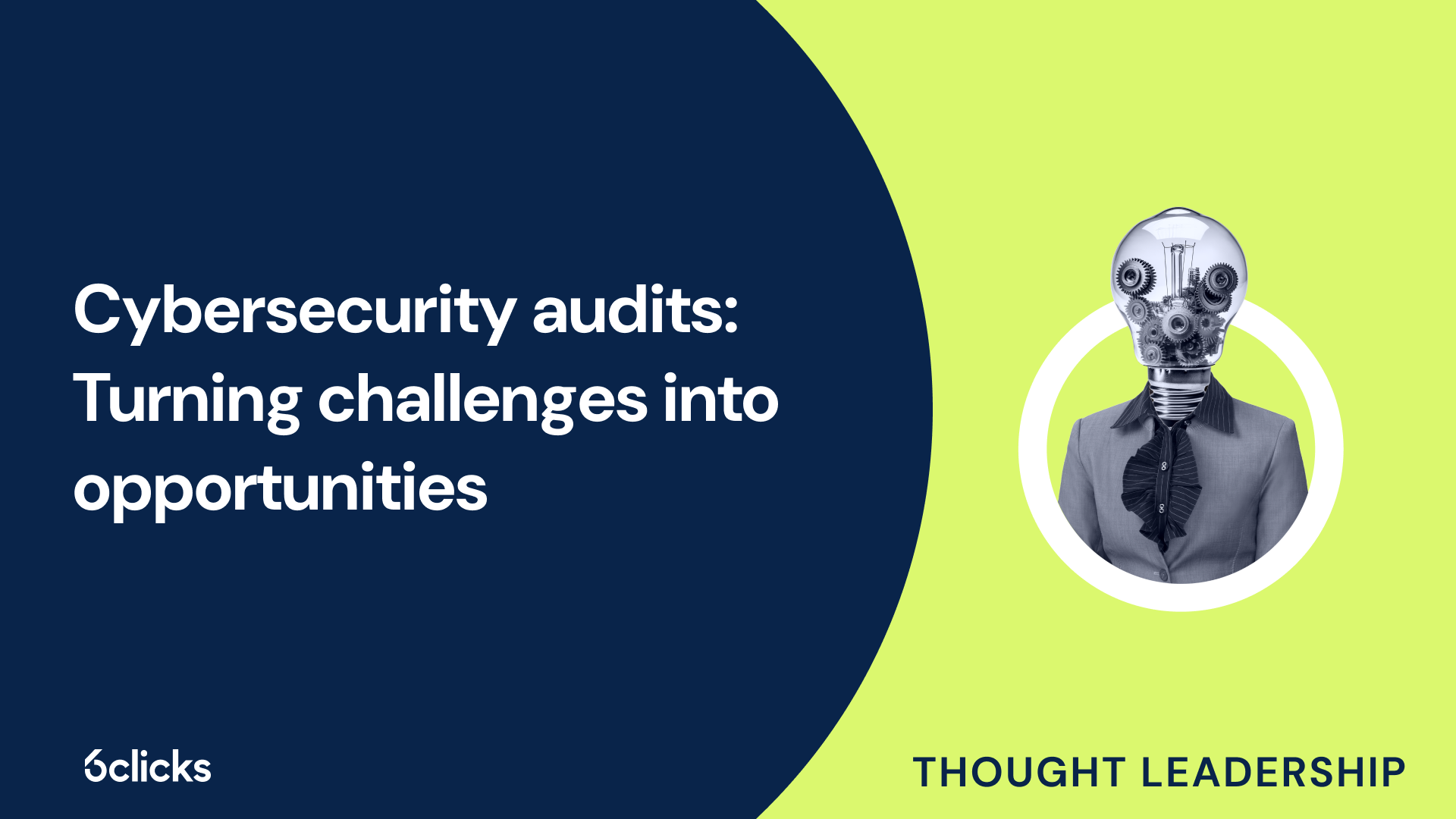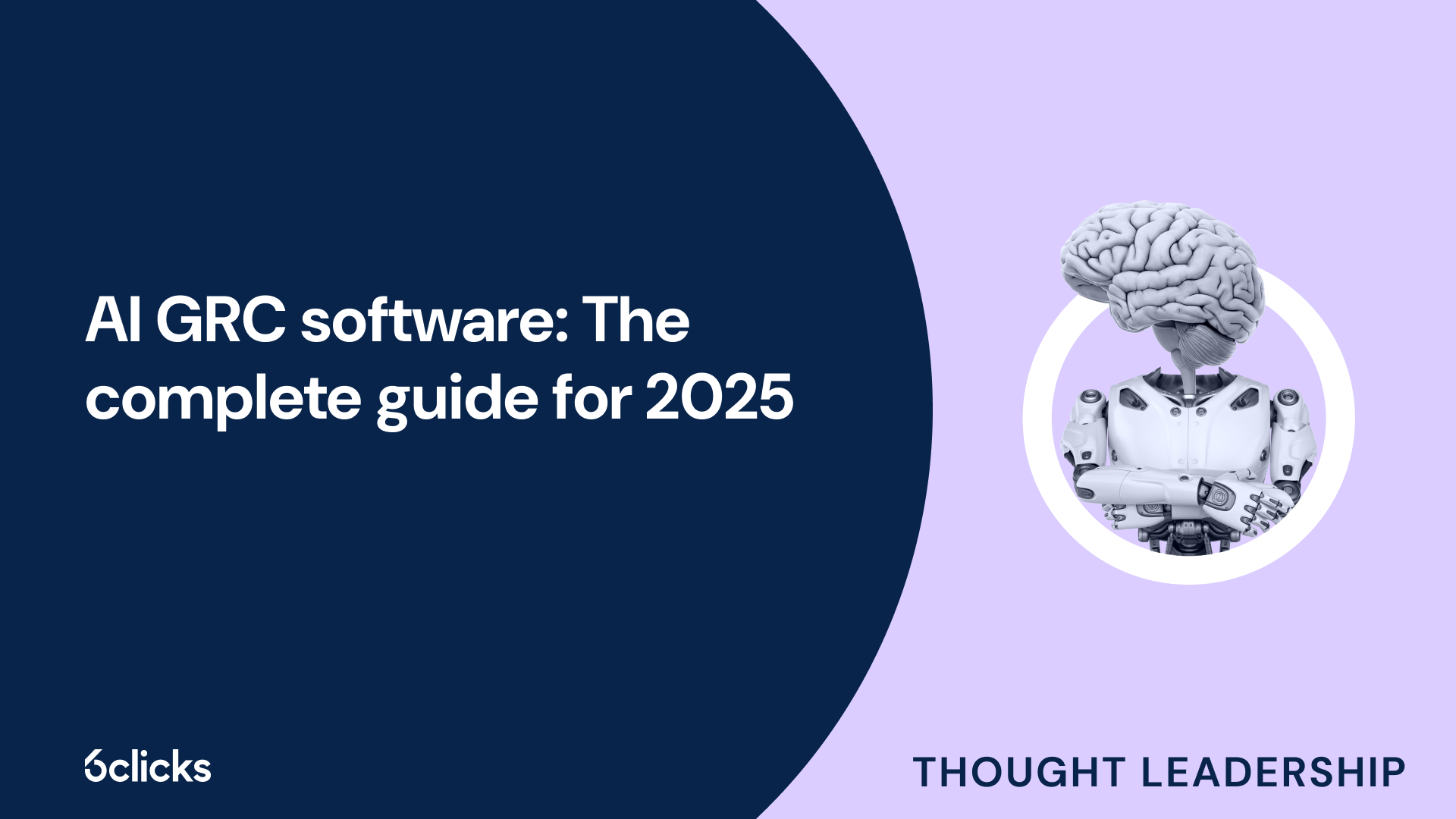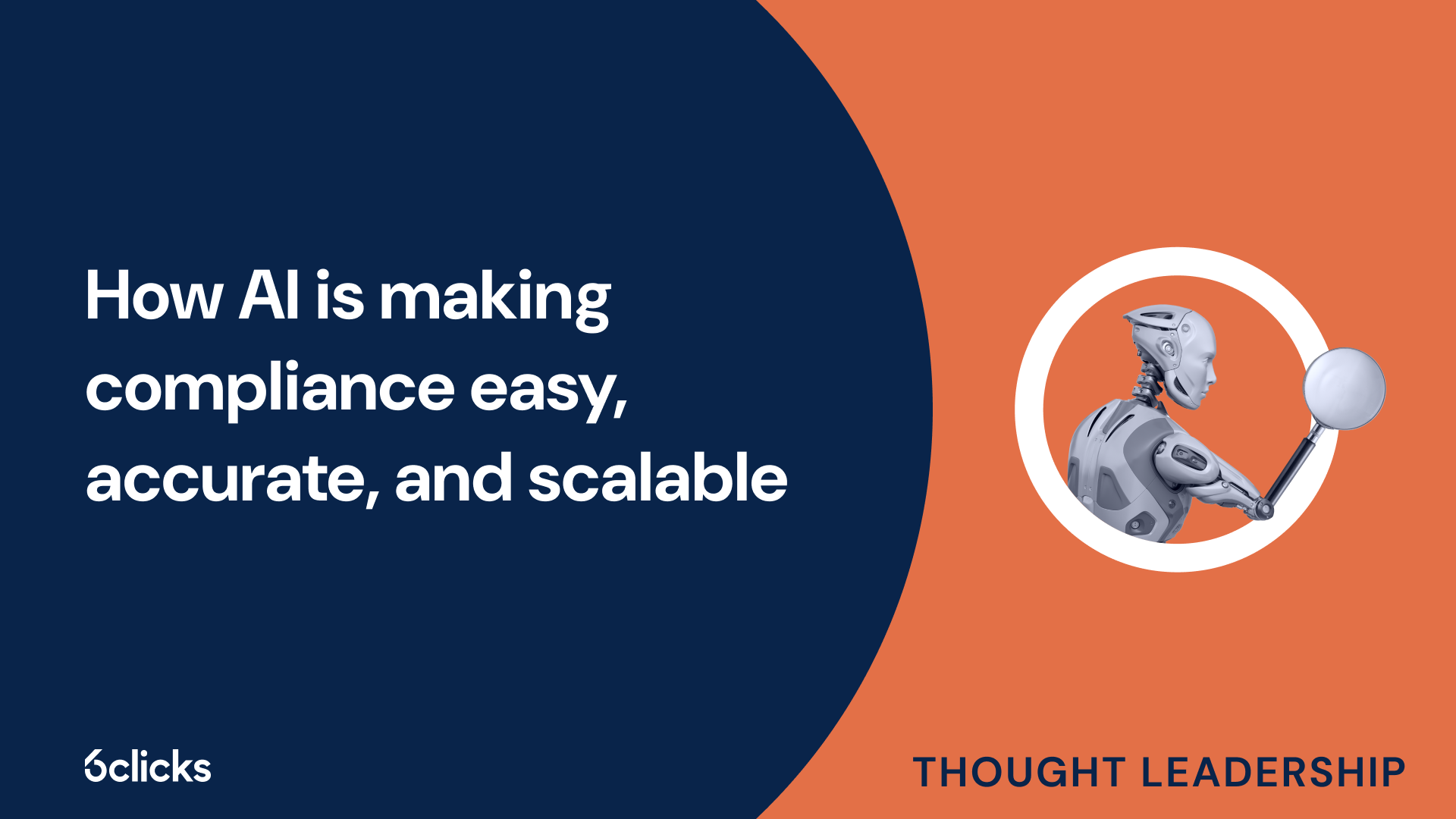The GRC buyer’s guide for 2025: Building resilience with AI-powered, federated solutions
Discover the ultimate GRC buyer's guide for 2025! Uncover how AI-powered, federated solutions transform compliance and security management for industries like government, aerospace, banking, and more. Learn about centralized control, continuous compliance, and advanced cyber GRC capabilities. Download now!
-1.png?width=200&height=249&name=Group%20193%20(1)-1.png)
The GRC buyer’s guide for 2025: Building resilience with AI-powered, federated solutions
What is FedRAMP?
The Federal Risk and Authorization Management Program (FedRAMP) is a government-wide program established to ensure the security and compliance of cloud computing services used by federal agencies. FedRAMP provides a standardized approach to security assessment, authorization, and continuous monitoring for cloud products and services. It sets the security requirements that cloud service providers (CSPs) must meet in order to be considered FedRAMP compliant and authorized to provide cloud services to federal government agencies. FedRAMP allows federal agencies to leverage secure cloud solutions and enables the adoption of cloud computing across the government while ensuring the protection of sensitive data and systems. FedRAMP compliance is a rigorous process that involves the submission of an authorization package and undergoing extensive security assessments by a third-party assessment organization (3PAO). Only CSPs that successfully complete the FedRAMP authorization process are listed in the FedRAMP marketplace and are eligible to provide cloud services to federal agencies.
Who needs to comply with FedRAMP?
Federal agencies and cloud service providers are the main organizations that need to comply with FedRAMP (Federal Risk and Authorization Management Program). FedRAMP is a government-wide program that provides a standardized approach to security assessment, authorization, and continuous monitoring for cloud-based services. It ensures that cloud service providers meet the necessary security requirements to protect the data and systems of federal government agencies.
Federal agencies, including the Department of Defense and other government agencies, are required to comply with FedRAMP when adopting cloud computing services. They need to ensure that the cloud service offerings they use are FedRAMP compliant and have undergone the necessary security assessments and authorization process.
On the other hand, cloud service providers need to comply with FedRAMP to gain access to the federal government market. They must obtain a FedRAMP authorization package, which includes a security package and a third-party assessment organization's assessment of their cloud solutions' security.
Federal agencies
Federal agencies play a crucial role in the adoption of cloud computing services within the government. As stewards of sensitive data and critical systems, these agencies must prioritize the security and compliance of the cloud service offerings they use. FedRAMP (Federal Risk and Authorization Management Program) provides a standardized approach to security assessment, authorization, and continuous monitoring for cloud products. To ensure the protection of sensitive information and secure cloud solutions, federal agencies are required to comply with FedRAMP's rigorous requirements. By adhering to these standards, federal agencies can mitigate the risks associated with cloud environments and confidently leverage innovative technologies to meet their operational needs.
Requirements for compliance
Requirements for FedRAMP Compliance for Federal Agencies and Cloud Service Providers
Compliance with the Federal Risk and Authorization Management Program (FedRAMP) is essential for federal agencies and cloud service providers to ensure the security of their cloud solutions. In order to achieve authorization, both federal agencies and cloud service providers need to meet certain requirements.
For federal agencies, compliance with FedRAMP involves several steps. They need to develop a comprehensive FedRAMP System Security Plan (SSP), which outlines the security controls and safeguards in place for their cloud environment. Additionally, agencies must ensure that their cloud solutions comply with the Federal Information Processing Standards (FIPS) 199 categorization, which determines the impact level of the data being processed.
Furthermore, federal agencies are required to develop a Plan of Action and Milestones (POA&M), which identifies any security weaknesses or vulnerabilities and outlines the steps to remediate them. This document is crucial in demonstrating the agency's commitment to addressing security concerns proactively.
Cloud service providers, on the other hand, must undergo assessment by a FedRAMP Third Party Assessment Organization (3PAO). The 3PAO evaluates the provider's security controls and ensures their cloud service offerings meet the required FedRAMP standards.
Once authorized, both federal agencies and cloud service providers are also expected to implement a Continuous Monitoring (ConMon) program. This program involves ongoing assessment and monitoring for cloud products, ensuring that they remain in compliance with the established security requirements.
Meeting the requirements for FedRAMP compliance is essential for both federal agencies and cloud service providers to earn the necessary authorization and provide secure cloud solutions to the federal government. By following the standardized approach to security assessment and complying with the FedRAMP process, they can gain the trust of government agencies and contribute to the successful adoption of cloud computing in the government sector.
Benefits of compliance
Compliance with the Federal Risk and Authorization Management Program (FedRAMP) offers several benefits for both federal agencies and cloud service providers. By becoming FedRAMP compliant, these entities can enhance the security of their cloud solutions, improve efficiency, and achieve cost savings.
First and foremost, FedRAMP compliance ensures that the security of cloud solutions is of the highest standard. The program establishes a standardized approach to security assessment, ensuring that federal agencies and cloud service providers meet stringent security requirements. By adhering to these requirements, entities can mitigate the risk of data breaches and loss of confidentiality, safeguarding sensitive information.
Compliance with FedRAMP also improves efficiency by streamlining the authorization process. The program provides a set of templates and guidelines that help agencies and providers efficiently develop their security package and authorization package. Additionally, FedRAMP reduces duplication of efforts, as the authorization can be reused by other federal agencies, saving time and resources.
Achieving FedRAMP compliance can lead to significant cost savings. By adopting secure cloud solutions and infrastructure, federal agencies can reduce the need for costly on-premises infrastructure and maintenance. Cloud service providers, on the other hand, can expand their market reach by being listed in the FedRAMP marketplace, gaining access to more federal government agencies and increasing their potential customer base.
Furthermore, FedRAMP compliance enhances trust and confidence. Achieving FedRAMP authorization demonstrates a commitment to adhering to rigorous security standards, which in turn, instills confidence in customers and partners. It also opens up opportunities for collaboration and partnership within the federal government, emergency services, and law enforcement agencies.
How to achieve compliance
Achieving compliance with FedRAMP involves a step-by-step process that ensures cloud service providers and federal agencies meet the program's rigorous requirements.
- Understand the FedRAMP Requirements: Familiarize yourself with the FedRAMP Security Requirements Guide (SRG) and the Authorization Boundary definition to identify the specific security controls and processes that must be implemented.
- Prepare and Implement Security Controls: Develop and implement a robust security program that aligns with the FedRAMP requirements. This may involve establishing policies, procedures, and technical controls to protect data and ensure the confidentiality, integrity, and availability of cloud services.
- Conduct a Security Assessment: Engage a Third Party Assessment Organization (3PAO) to evaluate your cloud service offerings. The 3PAO will assess if the implemented security controls meet the FedRAMP requirements and provide a detailed report.
- Develop an Authorization Package: Compile all necessary documentation, including the security assessment report, system security plan, configuration management plan, contingency plan, and incident response plan. These documents will be reviewed by the FedRAMP Joint Authorization Board (JAB) or an agency-authorizing official.
- Submit the Authorization Package: Submit the authorization package to the FedRAMP Program Management Office (PMO) for review. The PMO will evaluate the documentation and coordinate any necessary clarifications or additional testing.
- Obtain Provisional Authorization: If the authorization package meets the FedRAMP requirements, the cloud service provider will receive a Provisional Authority to Operate (P-ATO). This allows the provider to offer their cloud services to federal agencies.
Achieving compliance with FedRAMP offers several benefits, including increased security, streamlined authorization processes, cost savings from adopting secure cloud solutions, expanded market reach, and enhanced trust and confidence among customers and partners. By following the step-by-step process and meeting the requirements, organizations can gain a competitive edge and access a wide range of government agencies and customers.
Cloud service providers (CSPs)
Cloud service providers (CSPs) play a crucial role in complying with FedRAMP requirements. As the providers of cloud computing services, CSPs must adhere to the standardized approach to security assessment and continuous monitoring mandated by FedRAMP. This ensures that their cloud environments meet the necessary security controls and processes to protect sensitive data for federal agencies. To comply with FedRAMP, CSPs must understand the specific security requirements outlined in the FedRAMP Security Requirements Guide (SRG) and implement a robust security program. They must also engage a Third Party Assessment Organization (3PAO) to conduct a comprehensive security assessment of their cloud service offerings. The results of this assessment, along with other required documentation, make up the authorization package that must be submitted to the FedRAMP Program Management Office (PMO) for review. If the package meets all the FedRAMP requirements, the CSP can obtain a Provisional Authority to Operate (P-ATO) and offer their secure cloud solutions to federal government agencies.
Requirements for compliance
Requirements for Compliance with FedRAMP: Who Needs to Comply?
Federal agencies, cloud service providers (CSPs), and commercial organizations seeking to provide secure cloud solutions to the federal government are required to comply with the rigorous standards set forth by the Federal Risk and Authorization Management Program (FedRAMP).
To achieve compliance, commercial CSPs must fulfill a series of key elements. This includes completing FedRAMP documentation, which entails an extensive examination of security controls compliant with the Federal Information Processing Standards (FIPS) 199 categorization. CSPs also undergo a comprehensive security assessment conducted by a FedRAMP Third Party Assessment Organization (3PAO).
In addition, CSPs must develop a detailed Plan of Action and Milestones (POA&M) that outlines any identified security gaps and the corresponding corrective measures to be implemented. Furthermore, they need to secure either a Joint Authorization Board (JAB) Provisional Authority to Operate (P-ATO) or an Agency ATO, which grants authorization to provide cloud services to federal government agencies.
To ensure the ongoing protection of sensitive data in the cloud, CSPs are required to establish and maintain a robust Continuous Monitoring (ConMon) program. This program involves regular audits and assessments to proactively identify and address any potential security risks or vulnerabilities.
By adhering to these requirements and successfully meeting the stringent standards set forth by FedRAMP, commercial CSPs can offer trusted and secure cloud computing services to federal government agencies. This standardized approach to security assessment and continuous monitoring ensures the integrity, confidentiality, and availability of government data in cloud environments.
Benefits of compliance
Compliance with the Federal Risk and Authorization Management Program (FedRAMP) offers numerous benefits for both federal agencies and cloud service providers (CSPs). By adhering to the rigorous standards set by FedRAMP, organizations can experience enhanced security, reduced risk, increased customer trust, streamlined processes, and improved agility.
One of the primary advantages of compliance is enhanced security. FedRAMP requires CSPs to undergo comprehensive security assessments and adhere to strict security controls, ensuring that sensitive data within the cloud is protected from unauthorized access and potential breaches. This significantly reduces the risk of data loss or compromise.
Additionally, compliance with FedRAMP instills a higher level of customer trust. Federal agencies, as well as other organizations, are more likely to choose FedRAMP-compliant CSPs due to the rigorous and standardized approach to security assessment. This demonstrates a commitment to maintaining the security and integrity of their cloud service offerings.
Furthermore, compliance with FedRAMP streamlines processes for both federal agencies and CSPs. With a standardized approach to security assessment and authorization, organizations can save time and resources by leveraging the existing FedRAMP templates and guidance. This results in a more efficient authorization process, enabling quicker deployment of secure cloud solutions.
Lastly, compliance with FedRAMP improves agility by providing organizations with a government-wide program for the adoption of cloud computing. By following established security requirements and procedures, federal agencies and CSPs can confidently embrace the benefits of cloud computing while ensuring data protection and regulatory compliance.
How to achieve compliance
Achieving compliance with FedRAMP involves several steps for both federal agencies and cloud service providers (CSPs).
For federal agencies, the first step is to determine the appropriate impact level of the system or data they plan to migrate to the cloud. They must then select a cloud service provider from the FedRAMP marketplace and work with them to develop an authorization package. This package includes all the necessary documentation and security controls that align with the FedRAMP compliance requirements.
The next step for federal agencies is to engage with a third-party assessment organization (3PAO) to conduct a rigorous security assessment. This assessment ensures that the cloud service provider's offerings meet the required security standards. Once the assessment is complete, the agency can submit their authorization package to the FedRAMP program management office for review and approval.
For cloud service providers, the first step is to ensure that their cloud services meet the FedRAMP security requirements. This involves implementing the necessary security controls and conducting a thorough evaluation of their cloud environment. They must then engage with a 3PAO to conduct an independent assessment of their security posture and ensure compliance with FedRAMP requirements.
The next step for cloud service providers is to develop their authorization package, which includes all the necessary documentation and evidence of their compliance. This package is then submitted to the FedRAMP program management office for review and approval.
The benefits of achieving FedRAMP compliance are significant. Federal agencies can be confident in the security of their cloud solutions, ensuring the protection of sensitive data. This compliance also enhances customer trust, as organizations are more likely to choose FedRAMP-compliant CSPs due to the rigorous security assessments and standardized approach. Additionally, compliance streamlines processes, saving time and resources for both federal agencies and CSPs. Overall, FedRAMP compliance enables the adoption of cloud computing while ensuring data protection and regulatory compliance.
Continuous monitoring and standardized approach to security assessments
Continuous monitoring is an essential aspect of compliance with FedRAMP requirements for both federal agencies and cloud service providers. It involves the ongoing monitoring and assessment of security controls to ensure that they remain effective and in line with the established standards. This monitoring process allows for the identification and remediation of any vulnerabilities or threats in a timely manner. Additionally, the standardized approach to security assessments is key in the FedRAMP compliance process. It ensures that all cloud service providers undergo a thorough and consistent evaluation of their security posture. This approach facilitates the comparison of different providers, enabling federal agencies to make informed decisions when selecting a cloud service provider. By employing continuous monitoring and standardized security assessments, both federal agencies and cloud service providers can maintain the security and integrity of their cloud environments and ensure compliance with FedRAMP requirements.
Overview of the process
Who needs to comply with FedRAMP?
Federal agencies and cloud service providers (CSPs) that provide cloud computing services to the federal government are required to comply with FedRAMP. FedRAMP, which stands for Federal Risk and Authorization Management Program, is a government-wide program that aims to ensure the security of cloud solutions used by federal agencies.
One of the key components of FedRAMP compliance is the process of continuous monitoring. This involves the ongoing monitoring of security controls to ensure that they are implemented correctly and are effective in protecting the information stored in the cloud. Continuous monitoring helps to identify and address any security risks and vulnerabilities in a timely manner, reducing the likelihood of a breach or loss of confidentiality.
To achieve FedRAMP compliance, CSPs must also adhere to a standardized approach to security assessments. This involves a comprehensive and consistent approach to assessing the security of cloud service offerings. It includes a thorough review of the CSP's security package, which includes various documents and evidence demonstrating compliance with FedRAMP requirements.
Once a CSP has obtained FedRAMP authorization, they are required to engage in post-authorization activities to maintain their security authorization. These activities include the submission of an annual assessment, which provides an updated analysis of the CSP's security posture and any changes or improvements made since the initial authorization. This annual assessment helps ensure that the CSP continues to meet the required security requirements and provides ongoing assurance to federal agencies utilizing their services.







